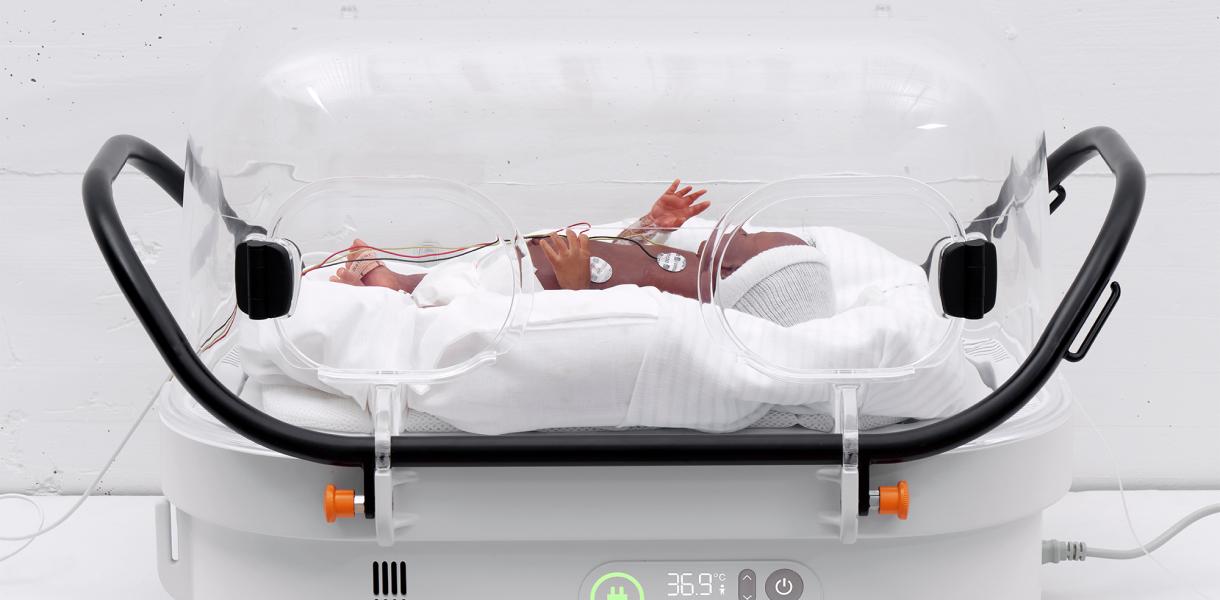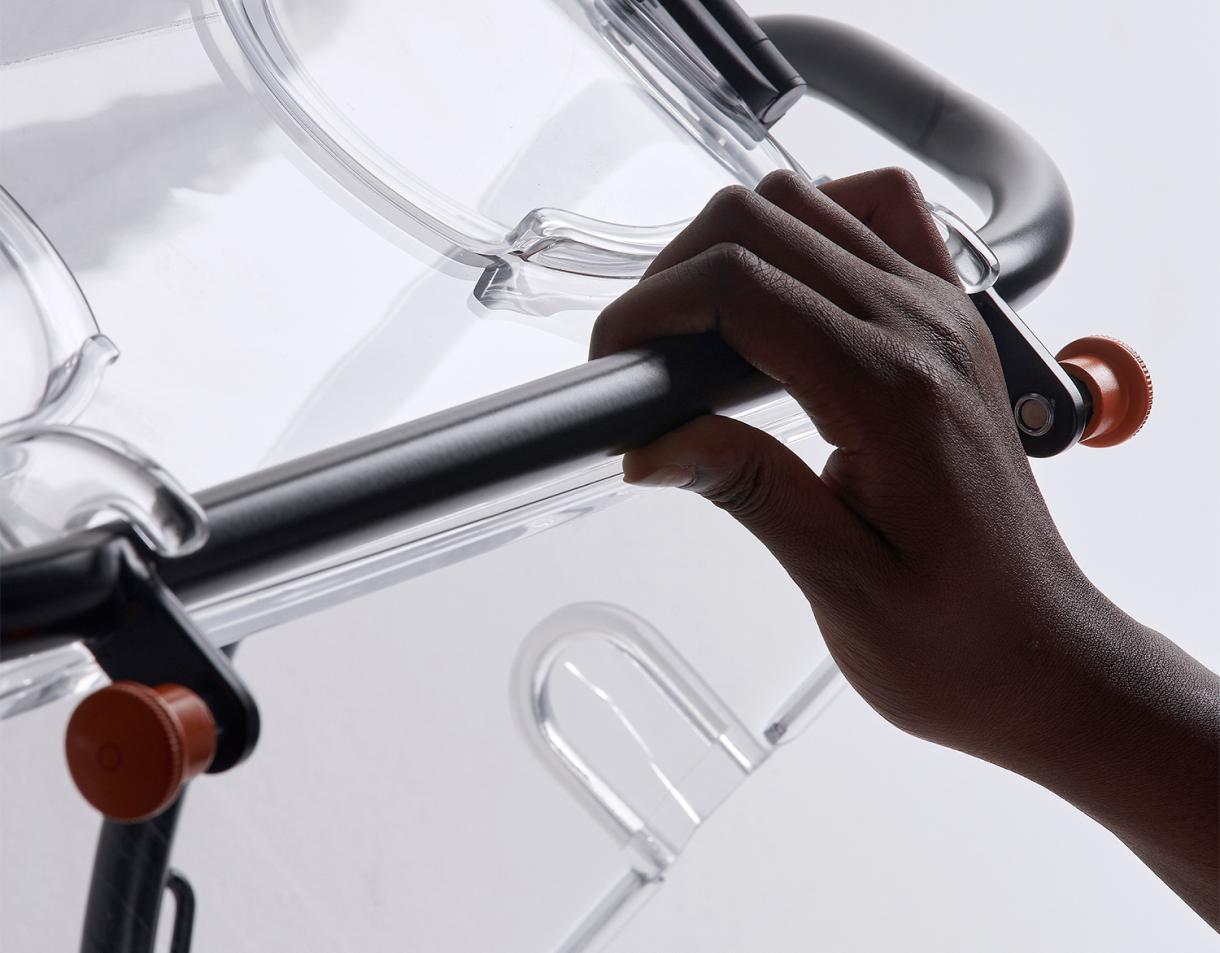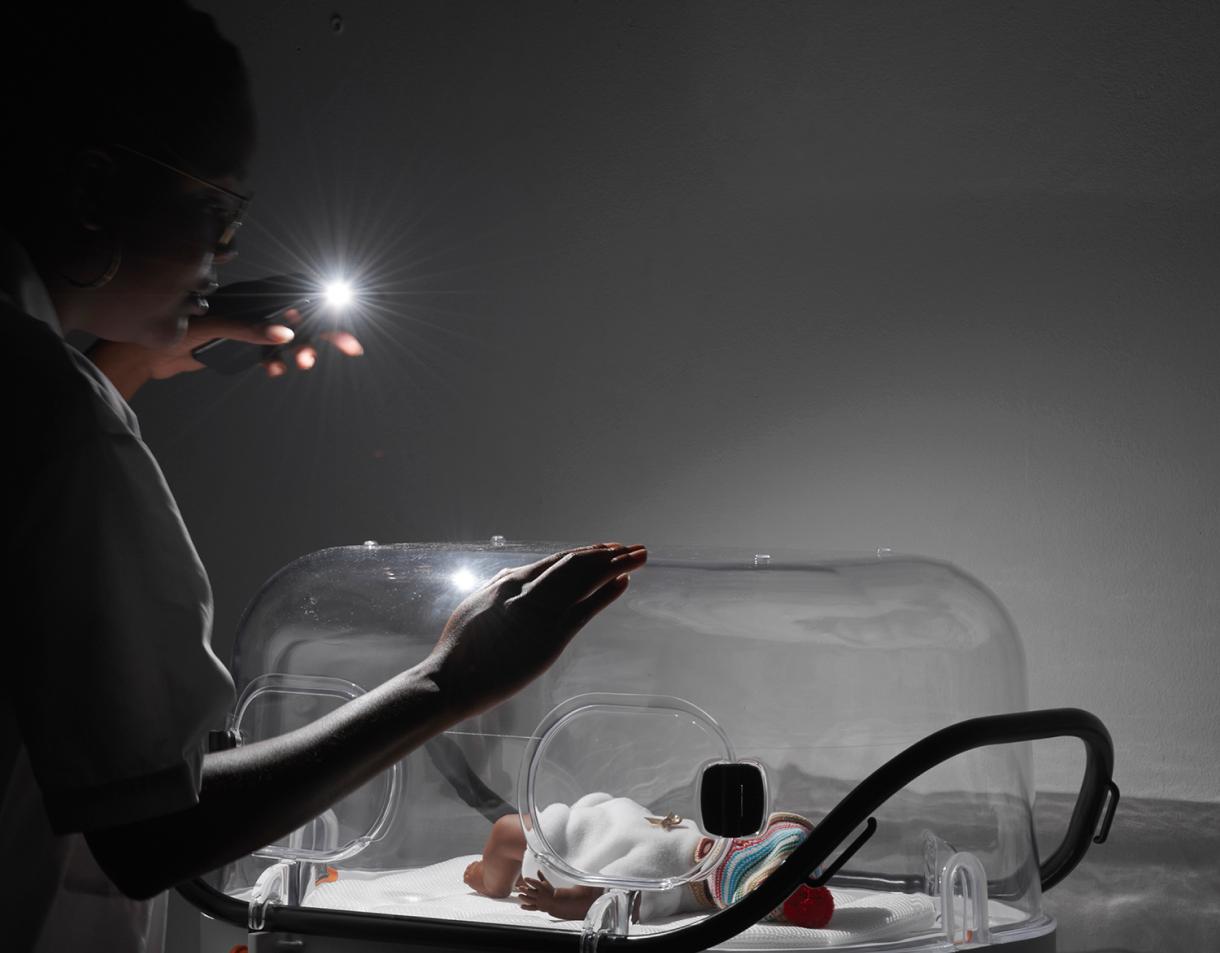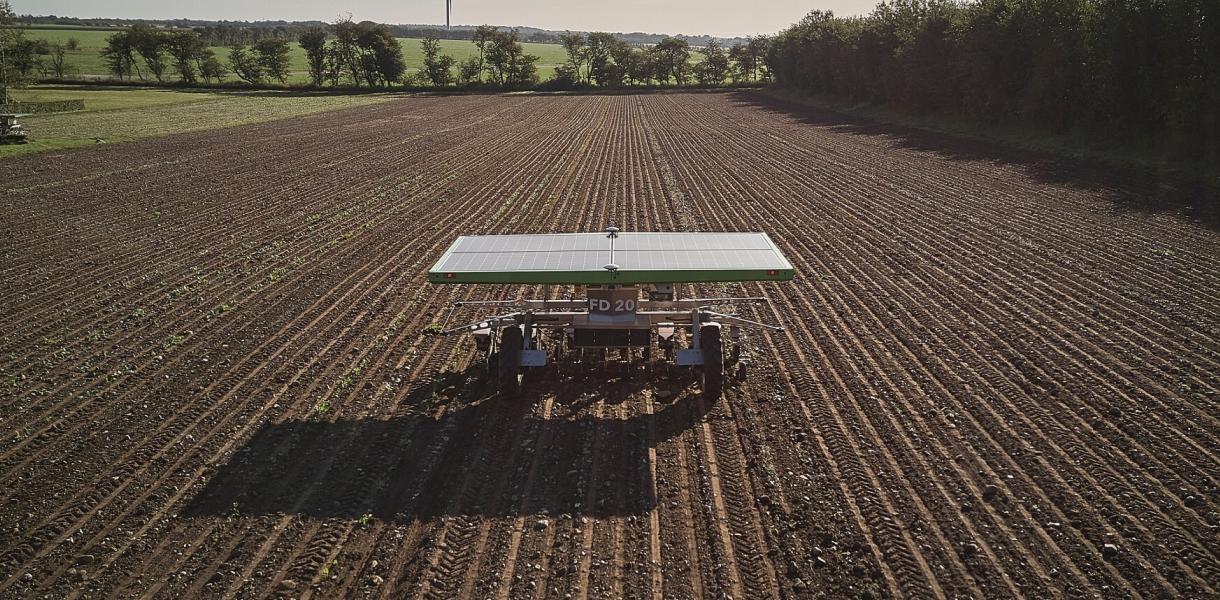What’s the design in a nutshell?
Robust Nest is a newborn incubator designed specifically to prevent hypothermia deaths in sub-Saharan countries. Thanks to a special thermal battery, it’s developed to resist power cuts, be easily and safely transported and prevent a common cause of newborn deaths.
Why is it needed?
Today, 1 in 7 babies are born with low birth weight. One of the main causes of death within this category is hypothermia, despite the hot and tropical climate in many regions. Luckily, these deaths can be prevented through thermal management, which is the norm in countries with robust healthcare systems.
But in sub-Saharan Africa, neonatal mortality is one of the highest in the world with 27 deaths per 1,000 live births. In fact, every year in sub-Saharan Africa, 1.1 million newborns die of hypothermia during the first month of their life. The newborn incubators currently in use don’t fit the context they’re supposed to work in. With frequent power outages and unpredictable weather, the incubators can’t keep babies warm consistently and aren’t designed to function in the sub-Saharan climate.
How does it work?
Designed by Swiss designer Fabien Roy in collaboration with EPFL’s Essential Tech Center, the Robust Nest is an affordable, compact and not at least robust newborn incubator.
Affordable as it’s shipped with a standard parcel and reduces shipment costs; compact as 16 Robust Nest units fill the same package volume as one original incubator and can be carried by one person; and robust as it’s able to provide heat up to four hours after a power cut. To top it all off, the incubator has a simple, language-dependent information system that informs the user.
"Every year in sub-Saharan Africa, 1.1 million newborns die of hypothermia during the first month of their life."
How does it improve life?
The neonatal period of a child’s life, defined as the first 28 days of life, is without a doubt the time where the child is most vulnerable and faces the highest risk of dying. On average, there are 17 deaths per 1,000 live births in the world as of 2019, which is 56% lower than in 1990.
While the neonatal mortality rates continue to be lowered overall, a child born in sub-Saharan Africa is still 10 times more likely to die in the first month than a child born in a high-income country. This shows how the effort to save newborns’ lives doesn’t come with a one-fits-all device, but with a solution designed for its context.
What’s the impact to date or projected impact?
By working with internationally renowned specialists and through extensive research, the Robust Nest today is at a working prototype stage. Throughout the design process, it has been well-researched and continuously iterated, so it was always built with the user and context in mind. Should it become a standard medical device, it has the potential of saving a million lives a year.








